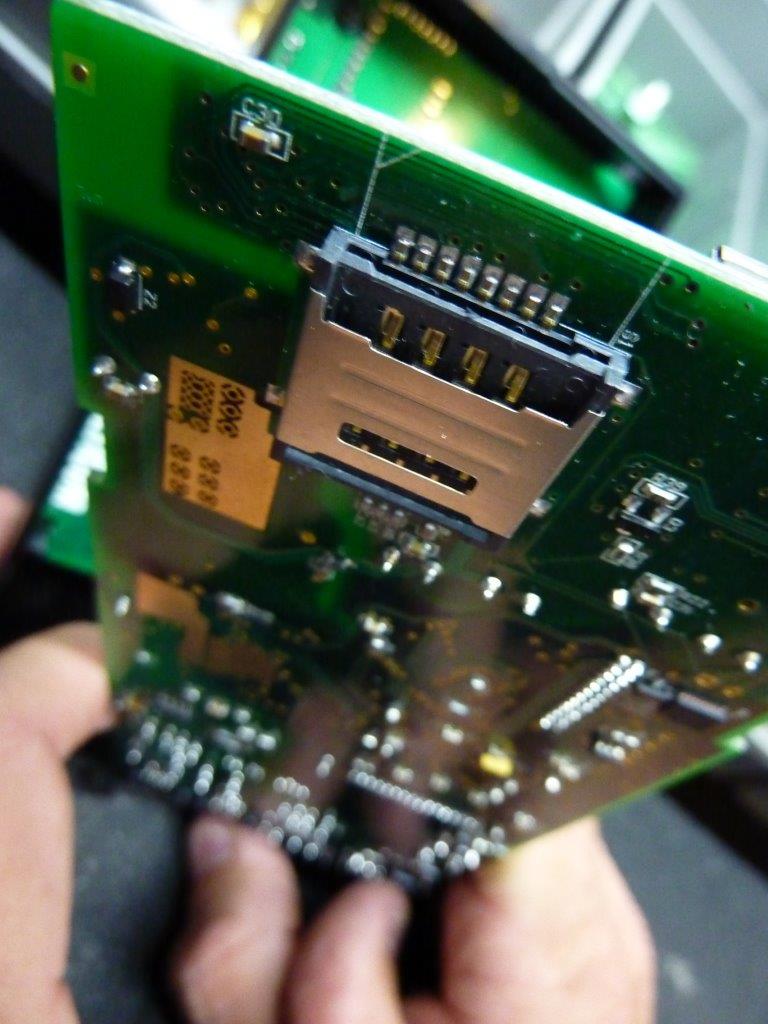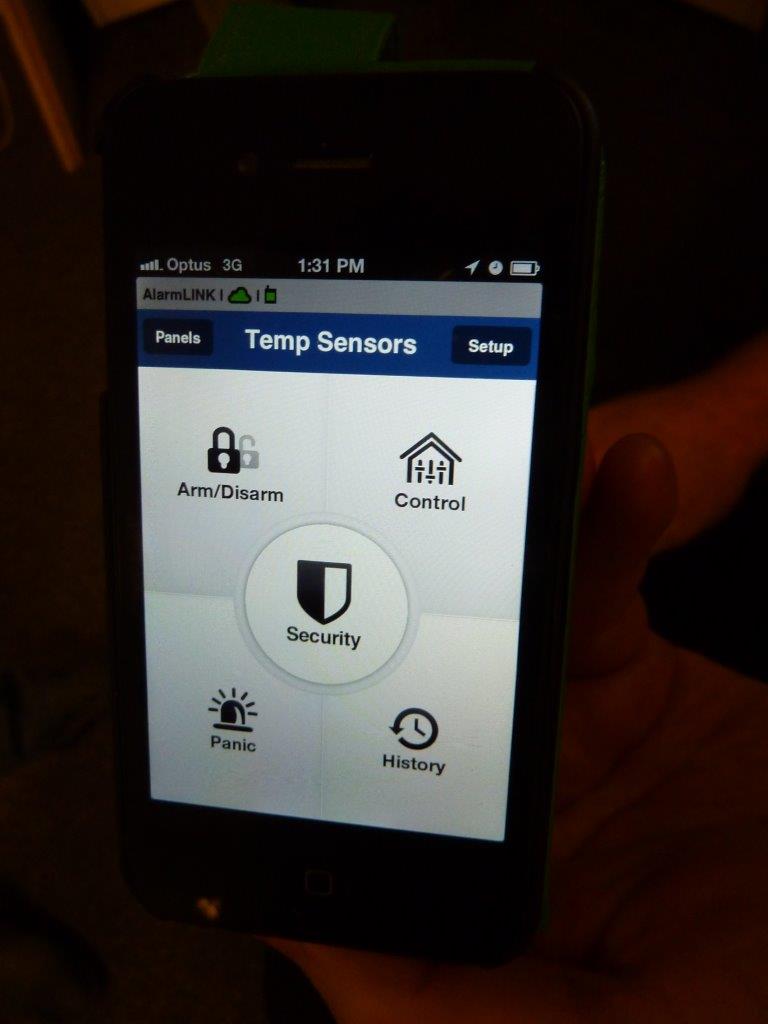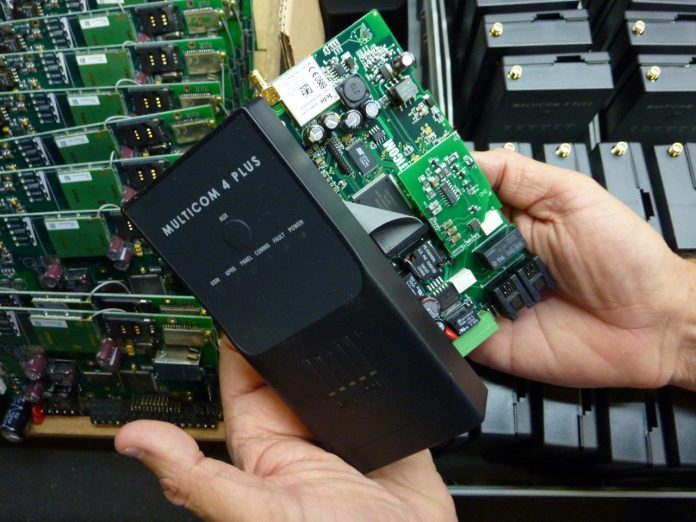Suretek’s Multicom 4 Plus takes alarm panel communications and feeds them onto digital networks, changing the way monitoring companies interact with their customers.
THERE’S something about the alarm monitoring industry that generates zeal, I think to myself, sitting in Suretek’s Wetherill Park office listening to managing director Glenn Smith talk about the company’s Multicom 4 Plus unit.
It’s partly the people but more than anything it’s the culture. Alarm monitoring companies are responsible for something. The seriousness of their operations, their sense of ownership of customer protection, bleeds into everything they do, infusing it with fierce meaning.
I’ve driven out to Suretek to get a quick run-through of the MC4P but as Smith dabs away at his palette and starts to paint a picture of the unit’s development I realise it’s going to be impossible to subtract this small polycarbonate box from the life and history of his company.
Smith started building control rooms in the early 90s before running his own control room, then selling it to join Suretek in 2001. This self-history governs him as a supplier of alarm monitoring software and hardware, and alarm communication solutions. There’s deep empathy for his customers, an awareness of exactly how it feels.
There’s something else in him, too. An holistic sense of monitoring as a networked business. From their inception in the 19th century monitoring stations have always been conceptual data networks sprawling across cities, across nations. Fact is, monitoring people have always had to imagine the shapes of their businesses – sprawling networks of controllers, dots joined by spider-spools of direct line, PSTN, wireless links – and now, by digital networks.

Glenn Smith and the Multicom 4 Plus
Multicom 4 Plus
In simplest terms, Multicom 4 Plus is a low cost dual SIM GPRS/GSM unit that turns any alarm panel – including those stars of the 1980s – into fully networked security solutions. MC4P works together with CAMS software, or with any other alarm monitoring solution, and the company’s Alarm Link app, to allow monitoring stations to offer their customers an IP-based level of service, with IP-based cost efficiencies and IP-based levels of communication while dispensing with analogue phone costs for reporting and system management. But more on this later.
Holding the MC4P in my hand I’m reminded of a hand-held 2-way radio – there’s a similar form factor and an externally mounted antenna. Across the faceplate are 6 LEDs displaying GSM, GPRS, Panel, Comms with Fault and Power. Installers can mount this housing next to an existing panel or install the housing inside the panel with a fly-lead to externally mount the antenna.
Features of MC4P include 2 GPRS paths, 2 Contact ID via GSM paths, and 2 Contact ID via PSTN paths. There are four 24-hour alarm inputs with programmable end-of-line resistors (EOLR) and a dedicated tamper input. Handling output devices are 2 programmable dry relay contacts for system trouble or for use as automation outputs.
The unit reports its own faults, tampers and alarm events, there’s full Contact ID to GPRS conversion, 128-Bit AES encryption and programmable alarm reporting priority. You also get Surepoll Private IP WAN (polling,
programming, alarm communications, remote software updates). MC4P’s hardware is C-Tick approved and certified, and is designed in Australia, meeting class 1, 2, 3 & 4 of Australian Standard AS2201.5 2008.
Functionally, MC4P takes signals from the connected alarm panel and flicks them to any Surepoll-enabled monitoring stations across GPRS, GSM, or PSTN if this is required. Should one path fails the MC4P switches to another path and tries again. Dual-SIM technology doubles redundancy on GPRS and GSM by using 2 separate carrier networks. Adding to robustness, the MC4P detects faults and outs on the active SIM and automatically switches to its second SIM.

SIM ports
According to Glenn Smith, Suretek originally intended to skip 3G and move directly to 4G.
“However, modems in the M2M space are still not available on the preferred Australian carrier frequencies so last month we decided to release our 3G solution for our out of city country partners and these stocks will be available in April this year,” Smith explains.
“GPRS is still a viable solution with the hand held consumer market moving to 3G/4G GPRS is actually becoming more reliable. With all carriers having interconnect agreements until 2017 and with end of life roll out we will likely not see this closure until 2020–2022.”
Smith says this breadth of comms support means the MC4P not only delivers alarm messages more securely and across more paths, but it also enables polling as frequently as every 40 seconds – that’s top performance. In addition to polling, the MC4P offers PFP, a proprietary Poll Fail Protocol that verifies active communication paths in the event of signal dropout or panel failure.
“It’s very exciting time – the best time is ahead of us. You should not be frightened to move away from the old business model”
Also neat are built-in output relays that enable users to remotely arm and disarm their alarm panels, open gates or turn lights on and off. Monitoring stations or their clients can control these outputs with simple, secure commands sent from smart phones by the consumer or direct from a monitoring station’s automation software.
According to Smith, while some installers and monitoring centres might be nervous about it, the digital future offers the industry and its customers a new beginning.
“It’s a very exciting time – the best time is ahead of us,” says Smith. “Perhaps it’s a little frightening for those who depend on rebates but if you embrace IP there’s a lot to look forward to, a lot of business to be done. You should not be frightened to move away from the old business model.
“If you move a customer from the old PSTN model and sell them properly, you can save them phone line charges, save them call charges and offer them a superior service, with higher rates of polling and more communication at less overall cost, and without losing revenue yourself.”
Nor does the new model mean monitoring business itself is under threat.
“I’ll never build a device that enables a client to self-monitor or that bypasses the control room,” Smith says. “But I will always build a device that allows control rooms to enhance the services they offer to clients.
“The key to all this is getting alarm systems off PSTN networks and onto digital networks with fixed costs for data rates where things like increased polling and increased levels of communication have no impact on system running costs – and to do it reliably. Only our managed service does all this.”
Doing this properly depends on the Suretek network, which has been developed over many years in partnership with Telstra and Optus. Also vital to this business concept is the MC4P unit supported by Suretek’s Alarm-Link application driven by Suretek’s cloud-based network.
“AlarmLink works with any alarm panel including the old Ness 5000,” Smith tells me. “It reports through Suretek’s Surepoll network and allows monitoring stations to share information about their system with users. And because it’s IP-based there’s no call cost associated with this increased level of communication between monitoring centre and end user.
“The way it works is that monitoring stations push information to their clients via smart devices running the Alarm Link app,” Smith explains. “The message might be ‘An alarm has gone off on Zone 1, what would you like me to do? Call police, send a patrol, speak to an operator?’ And the monitoring team knows if the client has seen the data and acknowledged or even ignored it.
“This sort of communication is how we all communicate with each other now and we communicate this way because it is convenient,” Smiths says. “This communication method should be used to enhance alarm monitoring services. Monitoring stations don’t want to be ringing a client 3 times a week to check late-to-close alerts – it eats half their profits. With Alarm Link, this function is automated in CAMS software and is very intuitive. As a result, profitability goes up, comms costs for the end user go down, service levels go up.”
According to Suretek’s Peter Konstanta, AlarmLINK is a 2-stage app.
“Stage 1 of AlarmLINK, which is our current version, is not dependent on any specific alarm monitoring software at the monitoring centre – it allows the end user to communicate with their alarm system – remote arm/disarm, view panel history and a bonus panic feature which sends the current coordinates of the smartphone user to the monitoring centre, attached to the users account,” Konstanta explains. “Users for AlarmLINK can be administered from our installer smartphone application called TechTools.
“Stage 2 of AlarmLINK, which will be the next version of the app, will add additional features for our customers utilising CAMS Software at their monitoring centre. It will support end-user integration with CAMS through the same GUI as the current app. The integration with CAMS is what makes the 2-way communication model described here possible,” says Konstanta.
“Stage 2 will be able to either turn on or off those features depending on the availability of a CAMS monitoring centre or Multicom device. An important feature is that both versions of the app support white labelling – it can be custom branded to the installers company colour and logo, providing a seamless experience between the security company and the app they use.”

A neat function of the Multicom Smart Bus product is that user’s can receive notifications of high/low temperature alarms through AlarmLink.
“This combination of technologies makes any alarm system much more capable for no additional cost. It will report any event to the user and it works with any panel through any product in our Multicom range, including Multicom 4 Plus,” Smith explains. “Because we are integrated in the backend we don’t need a new panel to be installed to handle IP. We can use the existing hardware.”
Looking at the Alarm Link app on an iPhone, I can see how simple operation is. There’s a screen with simple navigation icons. Arm/disarm, Panic, Control, History. You tap through these gateways to the functionality beyond.
According to Smith, MC4P is going very well. Installers are so keen on it the company has had to increase manufacturing orders to keep up with growing demand.
Before I leave, Smith shows me Suretek’s co-location monitoring centre. Adjacent to a museum of alarm and fire monitoring, though twin pairs of stainless steel doors like the valves of a giant heart, is the enormous 17-workstation co-location monitoring centre Smith has spent years building by hand. I’ve seen this centre a number of times but now nearing completion it’s a thing of real beauty.
The nature of this co-location monitoring centre is that it allows Suretek’s CAMS and ADSW monitoring station clients who are faced with disaster to re-direct all their alarms traffic seamlessly to a secure central location. Standing there staring around me, I realise it’s entirely appropriate that at the core of Suretek and of Glen Smith, is the most magnificent alarm monitoring facility in Australia.
By John Adams










